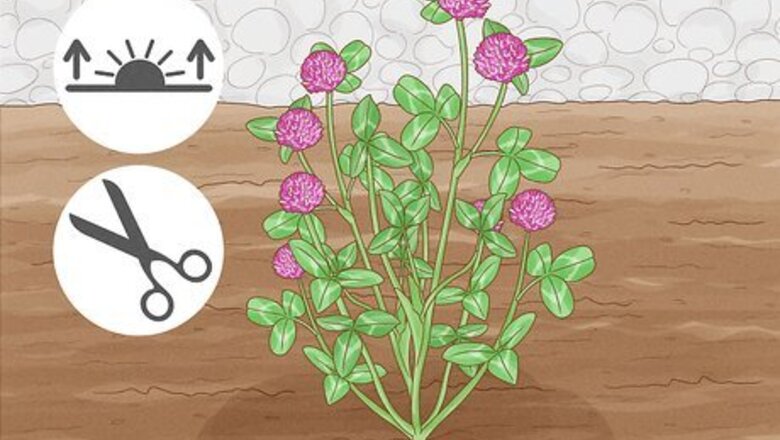
views
Timing Your Harvest
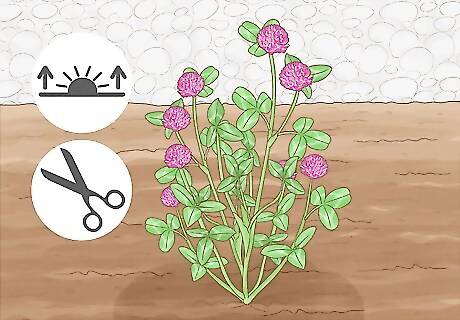
Harvest red clover early in the day. The best time to cut red clover is early in the morning, right after the dew has dried. This way, it'll still be somewhat cool out and the plant will have some time to recover before the hottest point of the day. If you cut late in the day, you might weaken and hurt the plant.
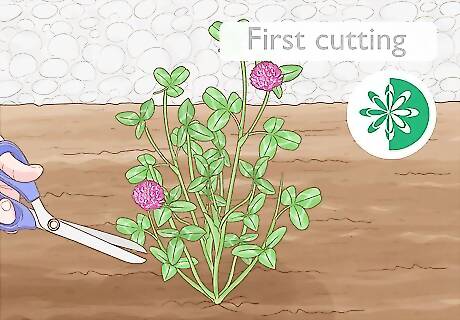
Conduct your first cutting before the plant's first mid-bloom. Mid-bloom is when half of the red clover plants in a given location (a field, your garden, or yard) have at least one flower. Harvesting at this point should yield sweet red clover flowers and leaves. This should not hurt yields for later harvests. The first mid-bloom of the year will typically be in the spring.
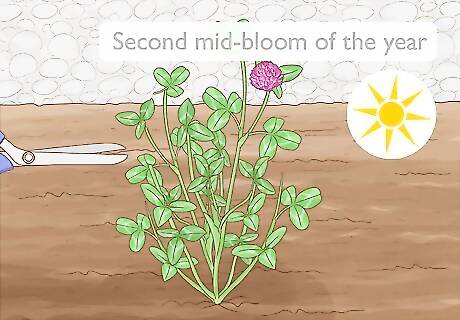
Cut at the second mid-bloom. Depending on your region, you'll likely be able to get another harvest in about six weeks after your first harvest. To do this, wait until the plant blooms fully and then gets to another mid-bloom. The second mid-bloom of the year will typically be in the summer, depending on region.
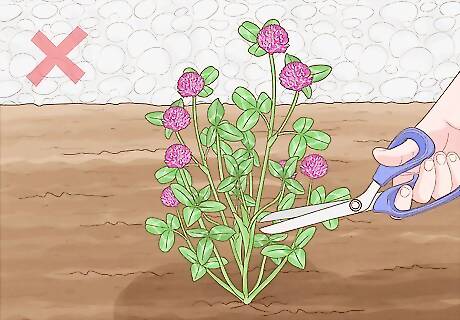
Don't cut at or after full bloom. Full bloom is when the vast majority of plants in a given location (a field, your garden, or your yard) have flowers that are blooming. Cutting at or after full bloom could harm the plant and potentially lower yield for the following season. As a result, if you plan to continually harvest a particular red clover patch, you should not harvest late into a bloom.

Avoid harvesting during hot and dry weather. Harvesting when environmental conditions are poor could harm red clover plants and negatively impact production. As a result, don't harvest during drought and don't harvest if it is unseasonably warm. Make sure rain has been somewhat regular before harvesting.
Cutting and Processing Red Clover
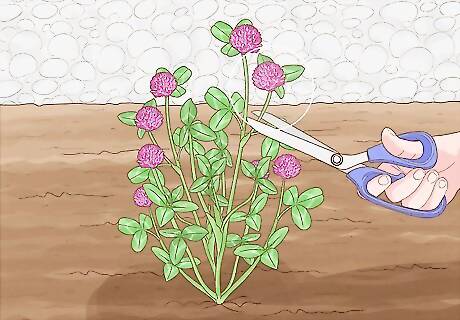
Cut the stem above the leaf growth. When harvesting red clover flower for personal consumption, cut the stem above the leaf growth. After cutting the stem from the plant, you'll want to remove any remaining stem from the flower itself.

Cut leaves. Leaves may be cut from the stem in clumps of three. When cutting the leaves (or the flower), avoid cutting the entire plant at its base. While the plant can regrow more leaves and stems, you'll hurt its ability to produce if you cut it too low. Remember, don't waste any part of the plant you won't use. Only cut the leaves you plan on using.
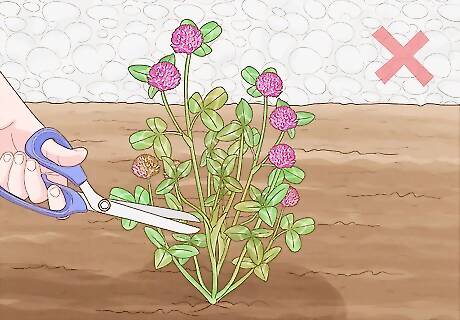
Avoid plants with discolored flowers or leaves. Plants with discolored flowers or leaves could be sickly. Harvesting sick or weak plants could not only hurt the plant (and make it so the plant can't recover from the harvest), but it could impact the flavor and quality of whatever you produce with it. Allow plants with discolored flowers or leaves to grow until the next season. If they still appear discolored, uproot them.
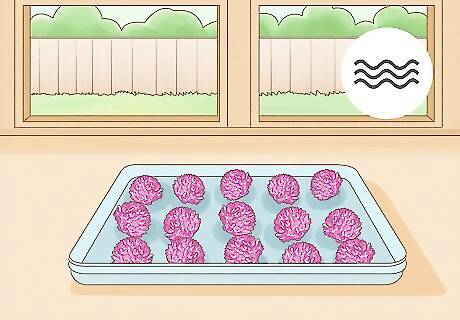
Place your harvest on trays or racks to dry. Unless you choose to eat the leaves or flowers when they are fresh, you need to dry out your harvest so you can store it properly. To do this, place wire racks or trays with leaves and flowers in a shaded area. Then, allow them to turn crisp. Make sure wherever you lay your harvest is not too moist or humid. Your harvest could mold or mildew. If you want to speed up the drying process, consider placing your harvest in a food dehydrator.
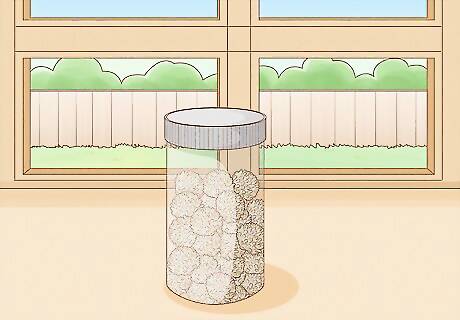
Put your dried clover into an airtight container. After you've dried your clover leaves or flowers, you need to store them appropriately. Gently place them into some sort of airtight container. When you're done, close the container as tight as you can. Use mason jars, Tupperware, or other similar containers.
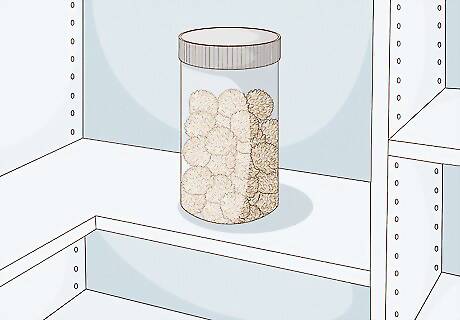
Store your red clover in a shaded, dry, and cool location. Take your containers full of dried red clover and place them in a part of your house that is cool and dry. This is important, as the cooler and dryer the location, the higher the chances that you'll be able to store your clover for a substantial period of time. Store your red clover in a place with temperatures lower than 70 degrees Fahrenheit (21 Celsius) and 60% humidity.
Consuming Red Clover

Use red clover as a garnish. You can use red clover as a garnish for a wide variety of dishes. However, due to its lightly sweet, floral flavor, it is very suited to desserts and sweet entrees. Sprinkle red clover flower over vanilla or strawberry ice cream. Place several red clover leaves on top of a sweet, creamy soup. Sprinkle red clover flower and leaves over a sweet chicken or fish plate. Light tasting fish work best. Try like flounder, cod, whitefish, grouper or tilapia.
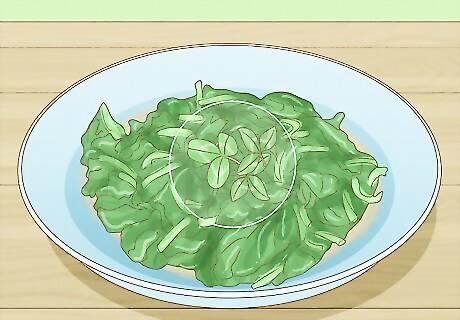
Incorporate red clover into food dishes. Use red clover as the base of food dishes or substitute it for other ingredients. By using red clover in your cooking, you'll make seemingly boring recipes exciting again. Create a red clover flour and use it in baked goods. For example, use some red clover flour in sugar cookies, pound cakes, or cup cakes. Incorporate red clover leaves into steamed vegetable dishes, like steamed spinach. Add red clover to spring or summer soups. Soups that have mint, asparagus, or peas will benefit from the addition of red clover.
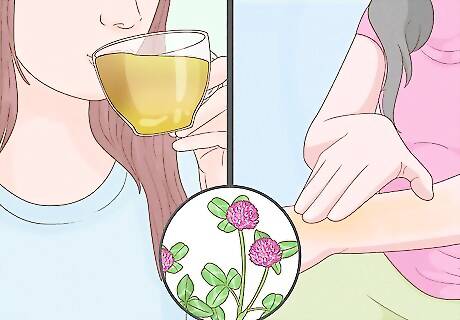
Take red clover as a homeopathic medicine. Many people consume red clover as a homeopathic remedy for a wide variety of ailments. To take red clover medicinally, dry the leaves and use them to make tea, or infuse the leaves with oil to make a salve you can rub on your body. Some ailments people treat with red clover include: Cancer Psoriasis Osteoporosis Cholesterol



















Comments
0 comment